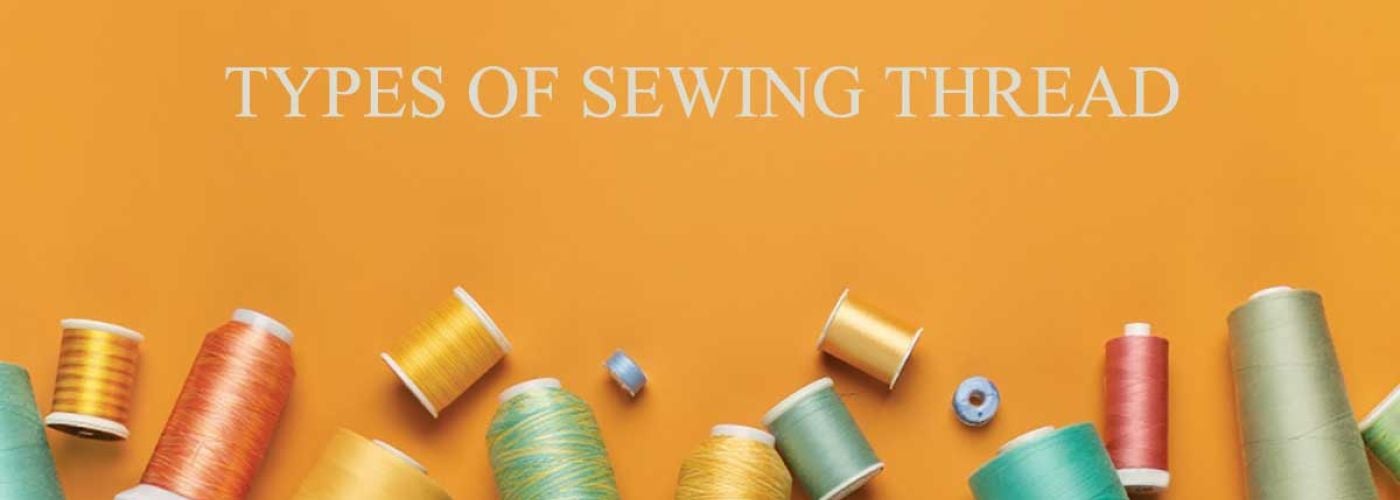
Best Sewing Thread Types: Selecting Your Threads
Looking for the right thread for your sewing project? This guide covers the main types of thread like cotton, polyester, and silk. You'll learn how to pick the perfect thread for different fabrics and ensure your stitches hold up over time.
Introduction to Sewing Threads
Sewing threads are the backbone of any successful sewing project, connecting fabric pieces and ensuring your creations stand the test of time. With so many different thread types available, selecting the right one can feel overwhelming, especially for those new to sewing. Each thread type brings its own set of characteristics—some offer extra strength, others provide a smooth finish, and some are designed for specific techniques or fabrics. Understanding these differences is key to making the best sewing thread choices for your needs. In this section, we’ll introduce you to the world of sewing threads, highlight the main thread types, and outline the essential factors to consider when selecting the perfect thread for your project. Whether you’re tackling garment sewing, quilting, or decorative stitching, knowing your options will help you achieve professional, long-lasting results.
Key Takeaways
- Sewing threads are categorized into natural and synthetic fibers, each offering unique characteristics suited for different projects.
- Choosing the appropriate thread type and weight is crucial for achieving durable and aesthetically pleasing sewing results.
- Specialty threads like metallic, elastic, and serger threads provide specific advantages for unique sewing techniques and applications.
Understanding Thread Basics
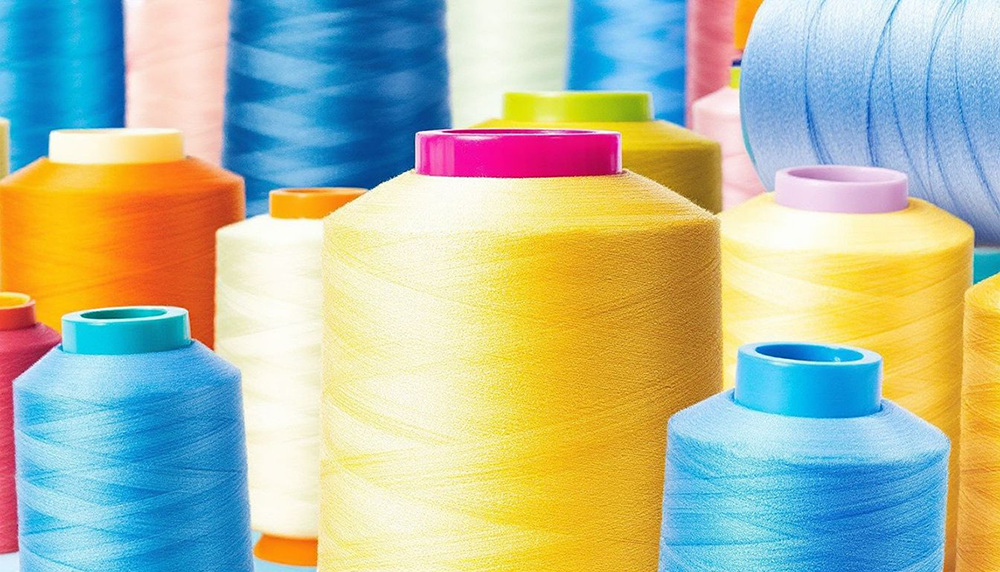
Understanding the foundational aspects of sewing threads is the first step in navigating their diverse landscape. Threads are generally classified into two categories: natural and synthetic fibers, each bringing unique attributes to the table. Natural fibers like cotton and linen provide a softer, more breathable finish, while synthetic fibers like polyester and nylon offer unmatched strength and flexibility.
The right sewing thread isn’t just about matching colors or brands; it’s about aligning the thread’s properties with your project’s needs. The right thread can mean the difference between a resilient, long-lasting garment and one that unravels after a few uses. For instance, a cotton thread might be perfect for a quilt, offering durability and a gentle touch, while a polyester thread might be the go-to for stretch fabrics, thanks to its elasticity and strength.
A well-informed decision about thread types can significantly improve your sewing outcomes. Understanding the basics of sewing threads helps you make choices that lead to professional-quality projects. Putting thought into your thread choices, rather than making quick decisions, can greatly impact the quality and appearance of your finished project.
Pay attention to the number system used for thread weight and ply, as these numbers indicate the thickness and strength of the thread, helping you select the right type for your specific sewing or embroidery needs.
Be aware that loose fibers in low-quality thread can cause trouble in your sewing machine, potentially gumming up gears and resulting in weaker seams.
Types of Threads Based on Materials
Polyester Threads
Polyester threads can be categorized by their construction, including spun polyester, high-tenacity polyester, core-spun polyester, and polyester embroidery threads, among others. With decades of experience in supplying polyester threads, manufacturers have established a reputation for reliability and quality in the market.
Spun Polyester Sewing Threads
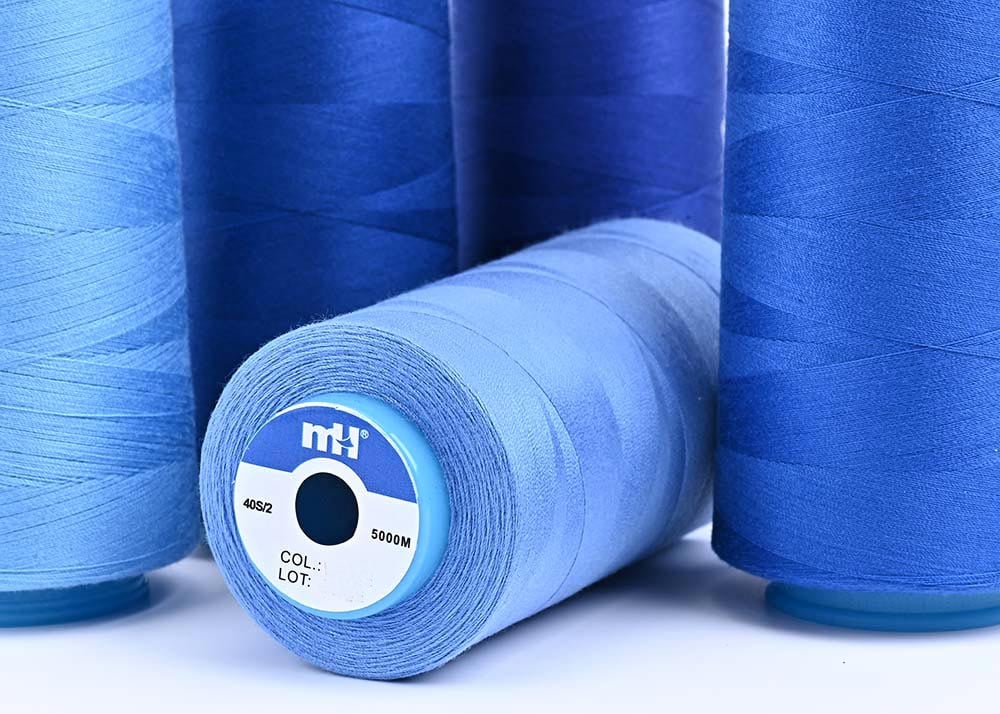
Structure:
- Made from short-staple polyester fibers spun together.
- Resembles cotton threads but offers the strength and elasticity of polyester.
Key Features:
- Soft texture and cotton-like appearance.
- Moderate strength and good elasticity.
- Affordable price point.
Typical Applications:
- Suitable for general-purpose sewing.
- Favored for lightweight or delicate fabrics like cotton, blends, or knits.
- Common in garment manufacturing for basic seams and stitching.
High-Tenacity Polyester Thread
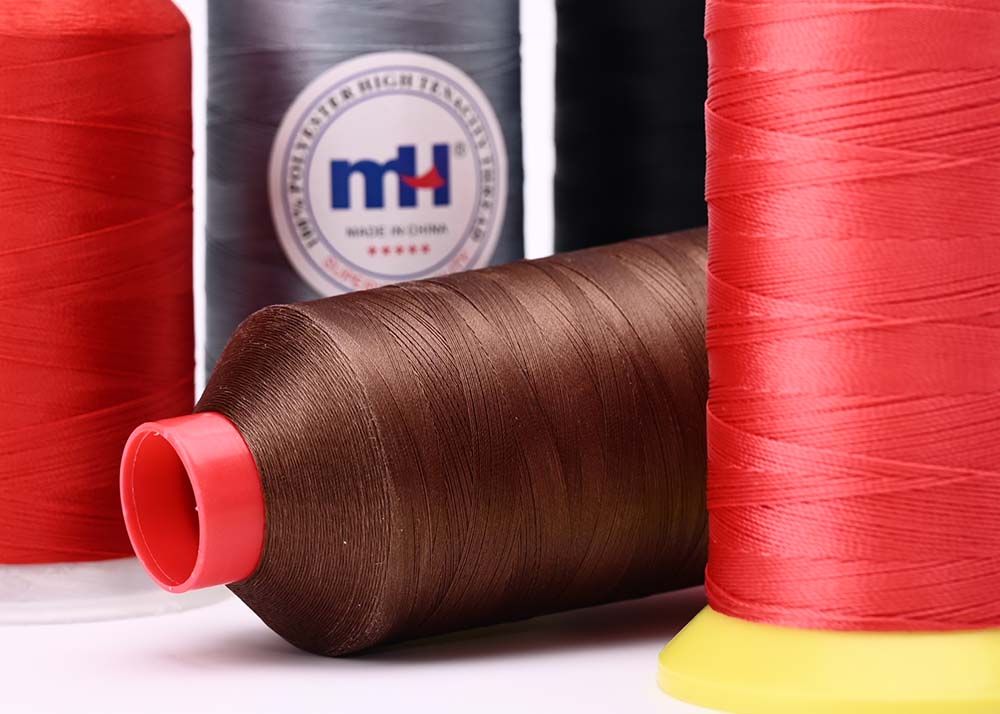
Structure:
- Made from continuous filament polyester.
- Enhanced with specific treatments to improve tensile strength.
Key Features:
- Exceptional strength and durability.
- Abrasion-resistant and weatherproof qualities.
- Resistant to shrinking and UV rays.
Typical Applications:
- Ideal for heavy-duty sewing in outdoor and industrial textiles.
- Common in products like upholstery, tarpaulins, bags, and safety harnesses.
- Provides excellent performance in high-stress environments.
Core-Spun Polyester Thread
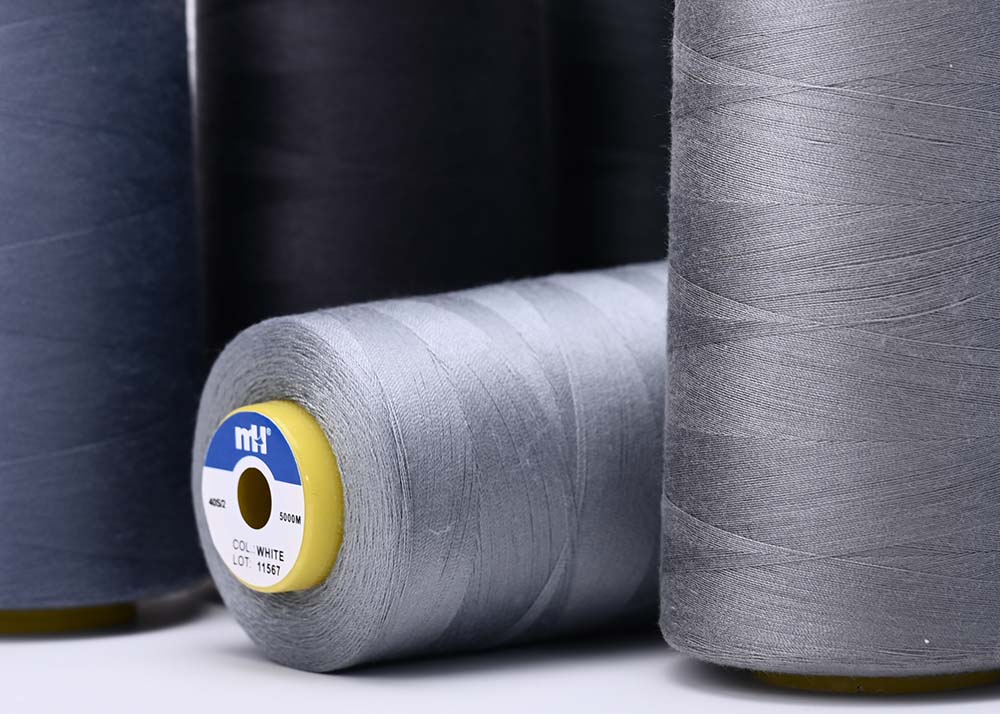
Structure:
- Combines a polyester or cotton core wrapped with polyester staple fibers.
- Offers a balance of strength and flexibility.
Key Features:
- High strength with a soft and smooth finish.
- Excellent resistance to fraying and abrasion.
- Superior seam integrity and reduced puckering.
Typical Applications:
- Preferred in high-speed sewing due to minimal breakages.
- Common in denim, activewear, and thick fabric stitching.
- Ensures optimal results in high-stress or stretchable fabric sewing.
Polyester Embroidery Thread

Structure:
- Constructed from either continuous filament or spun polyester with a lustrous finish.
- Specially designed to handle detailed embroidery work.
Key Features:
- High sheen and vibrant color retention.
- Resistant to fading, shrinking, and frequent washing.
- Smooth and consistent finish for intricate designs.
Typical Applications:
- Perfect for decorative stitching, logos, and appliqués.
- Widely used in fashion, home décor, and branded merchandise.
- Preferred for embroidered details requiring longevity and precision.
| Thread Type | Strength | Durability | Common Uses | Unique Characteristics |
|---|---|---|---|---|
| Spun Polyester Sewing Threads | Moderate | Good | General sewing, apparel production, quilting | Soft texture, ideal for a wide range of fabrics |
| High Tenacity Polyester Sewing Threads | High | Excellent | Heavy-duty sewing, upholstery, outdoor gear, industrial applications | Exceptional strength, resistant to wear and tear |
| Core Spun Polyester Sewing Threads | Very high (due to polyester core) | Excellent | High-performance garments, denim, activewear, technical textiles | Combines the strength of polyester core with superior stitching finish of outer fiber |
Cotton Threads

Cotton threads are a favorite among sewers for their strength, medium sheen, and softness. These threads come in various qualities, with higher-grade options producing less lint and being less prone to breakage. This makes them ideal for projects that demand both durability and a smooth finish.
A bonus of using Gutermann Cotton sewing thread is that its colors are more vivid and resistant to fading, providing a value-added feature for your projects.
Mercerization enhances cotton threads, making them longer, stronger, and more lustrous. This treatment improves the thread’s performance, ensuring that it holds up well under the pressures of sewing. Gassed cotton threads, which are treated in a flame to reduce fuzz, offer a smoother finish and lower lint, further improving their usability in sewing projects.
Cotton threads are particularly popular in quilting and embroidery applications, especially in weights like 80wt and 12wt. These weights provide the perfect balance of strength and subtlety, ensuring that your stitches are both visible and durable.
Cotton thread has little stretch and is highly resistant to heat, making it an excellent choice for items that require frequent pressing.
Silk Thread
Crafted from 100% silk, silk thread is prized among sewers for its exceptional strength and lustrous finish. This thread adds a touch of sophistication to any sewing project, making it particularly suitable for delicate stitching and embroidery work. Its natural sheen enhances the overall appearance of your creations, giving them a polished, professional look.
Different types of silk sewing threads, such as silk floss, twisted silk, and stranded silk, cater to various applications by twisting silk fibers. Whether you’re hand sewing or working on intricate embroidery, silk thread provides the durability and aesthetic appeal needed for high-quality finishes.
Nylon Thread

Celebrated for its incredible strength and durability, nylon thread is indispensable for heavy-duty sewing applications. Known for its resilience against abrasion and its elongation capability of approximately 26%, nylon thread ensures that seams can stretch without breaking, enhancing the longevity of your projects.
Available in various thicknesses, from very thin to cord-like, nylon thread caters to diverse sewing needs. Bonded nylon threads, with a resin coating that enhances strength and reduces friction, are particularly recommended for upholstery and leather applications.
For upholstery work, Tex 70 or Tex 90 bonded nylon threads are preferred due to their durability and wear resistance.
Linen Thread
Made from 100% linen derived from flax fibers, linen thread is renowned for its remarkable durability. This thread is ideal for heavier projects such as straps, bags, and canvas, offering robust stitching that stands the test of time. Its aesthetic appeal, with a subtle sheen, enhances the finished look of hand-stitched items, making it a favorite for leatherwork and other heavy-duty applications.
Best used for hand sewing, linen thread ensures strong and reliable stitches, providing the necessary support for demanding sewing projects.
Types of Threads Based on Features and Application
General Purpose Threads
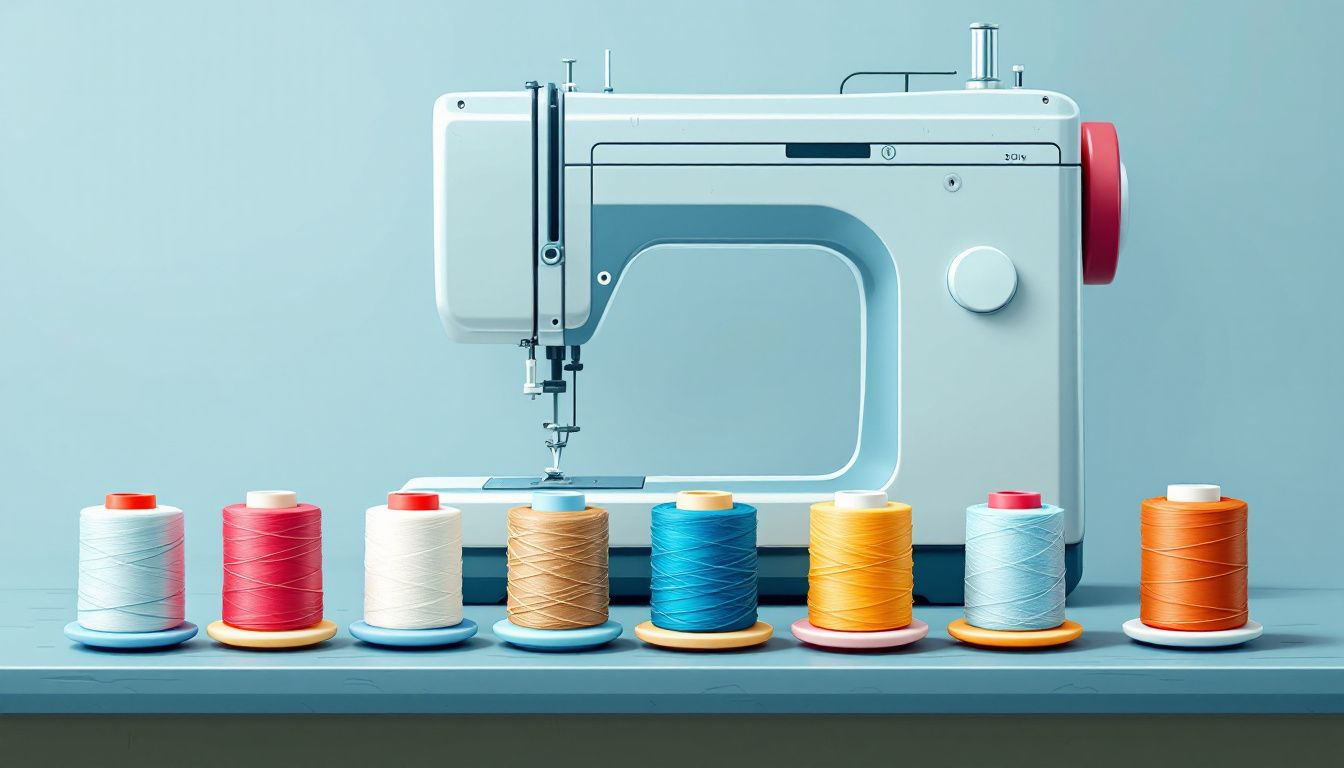
General-purpose polyester thread is a staple in the sewing community, celebrated for its versatility and reliability. This type of thread is strong, durable, and flexible, making it suitable for a wide array of sewing projects, from lightweight fabrics to more substantial materials. Whether you’re engaging in machine sewing or hand sewing, general-purpose threads can handle the task.
General-purpose threads are often displayed on racks at craft stores, making it easy for people to browse and select the right color and type for their projects.
Brands like Gutermann, Mettler, and Coats & Clark have become synonymous with quality when it comes to all-purpose thread. They transition seamlessly from everyday sewing to specialized projects, ensuring robust and aesthetically pleasing stitches. The adaptability of these threads makes them a staple in any sewer’s toolkit.
Serger Thread
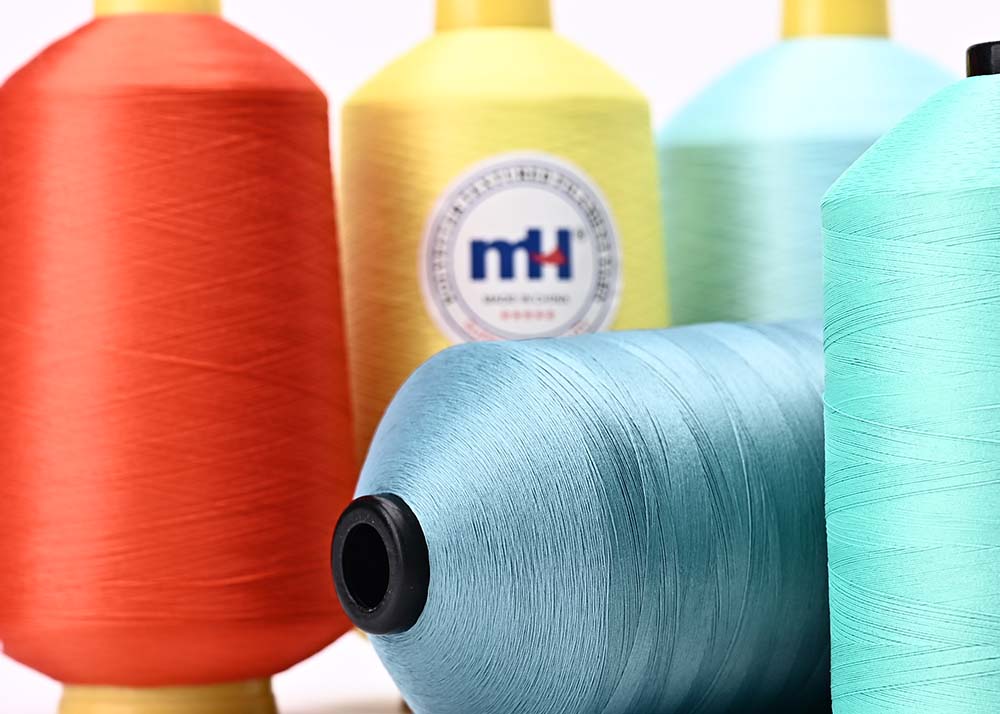
Commonly made from polyester, serger thread, also known as overlock thread, is known for its strength and resistance to breakage at high speeds. The fluffy design of serger thread contributes to greater fabric coverage, essential for securing edges. Serger threads are typically supplied on large spools, often containing 1000 to 5000 meters of thread, which is ideal for extensive sewing projects. Using serger cone threads allows for extended sewing without frequent thread changes, improving overall project efficiency.
Sergers use multiple strong and flexible threads to effectively secure fabric edges, typically requiring 3-4 spools of thread. Proper storage of serger threads in a cool, dry place helps maintain their quality and lifespan.
Heavy Duty Thread

Designed to endure high-stress seams and heavy fabric usage, heavy-duty threads are essential for projects requiring substantial wear and tear. Upholstery thread is thicker than regular threads, and with growing interest in sustainability, recycled sewing thread offers an eco-friendly alternative without compromising strength.
Extra-strong threads serve as heavier-weight, higher-durability alternatives to general-purpose thread, ideal for creating stronger seams in high-stress areas. For heavy-duty upholstery sewing, the recommended thread weight is 3wt, enhancing durability and support.
Invisible Thread
As the name suggests, invisible thread is used for discreet stitches in hems and seams, making connections nearly invisible. Invisible thread is a semi-transparent nylon thread that blends into your fabric, making your stitches virtually invisible. This thread can be effectively used in both machine and hand sewing, providing versatility in various sewing applications.
There are two primary types of invisible thread: nylon and polyester, each offering unique properties. Many sewists note that invisible thread feels similar to fishing line, which can help you anticipate how it will handle during sewing. The lightweight nature of invisible thread allows it to work with delicate fabrics, as well as being suitable for heavier materials.
For best results, using a smaller needle is recommended to prevent damage to the thread when sewing with monofilament.
Invisible thread is often used in quilting for sewing applique and attaching multi-colored binding, as it blends into your fabric to make your stitches invisible.
Metallic Threads
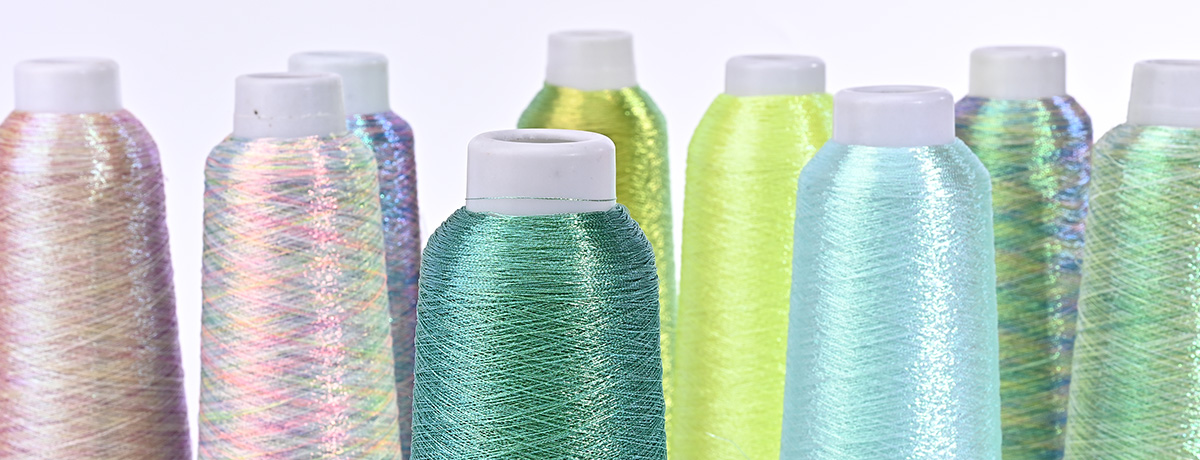
Primarily used for decorative stitching, metallic threads are created by bonding a foil-like metallic layer to a strong core thread, which ensures durability and smoothness during decorative or embroidery sewing. To ensure smooth handling and prevent breakage, a specialist metallic needle is recommended. Additionally, operating the sewing machine at lower speeds can help avoid thread breakage and ensure a smooth sewing experience.
However, metallic threads tend to be more expensive than standard threads, so for some decorative purposes, less expensive options like bobbin thread may be considered.
These metallic threads can be used effectively for machine sewing, allowing for creative designs and intricate details that stand out.
Keep in mind that metallic threads are used for decorative stitching and can be prone to breakage due to their thickness.
Elastic Thread

Essential for techniques like shirring and smocking, elastic thread adds stretch and flexibility to garments. This thread is commonly used for creating ruffles and gathering fabric in various sewing projects, enhancing garment fit and design.
When using elastic thread, it is typically hand-wound onto a bobbin, with regular all-purpose thread used in the top spool. This technique ensures that the elastic properties are evenly distributed, providing the desired stretch and flexibility in the finished garment.
Specialty Threads

Meta-aramid sewing thread is a highly versatile and durable material renowned for its superior heat and flame resistance. The unique feature makes it an ideal choice for various demanding applications, including the manufacturing of firefighters' clothing, safety equipment, and in industries such as automotive, aerospace, and military.
Specialty threads like High Extension Sewing Thread, an advanced sewing thread composed of PBT yarn, boasts superior extensibility, exceptional seam strength, and excellent sewing performance. Its elongation rate ranges from 30% to 60%, markedly surpassing that of conventional sewing threads with identical specifications. With its ability to produce highly stretchable seams on elastic fabric, it serves as a viable replacement for spandex thread.
Quilting Threads
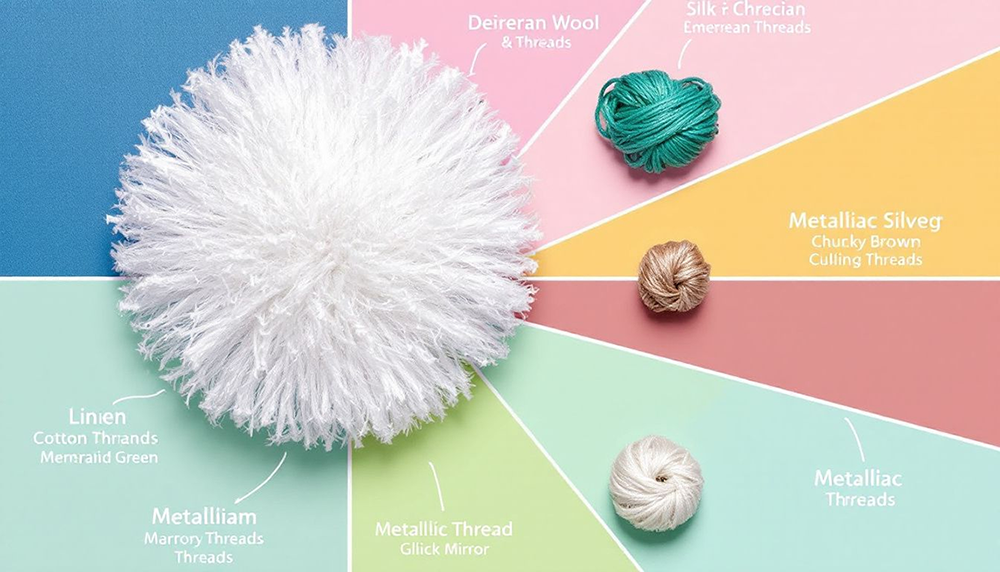
Typically made from 100% cotton, quilting threads are known for their strength and ability to create tight seams. Quilters often select high-quality cotton threads for their projects to ensure strong, tight seams. Often, they have a glazed finish and a light wax coating that prevents tangling during quilting. Waxed thread, with its light coating, is sometimes used for hand quilting to prevent tangling, but it is not recommended for use in sewing machines. Additionally, using high-quality quilting thread can enhance the overall durability of your projects.
The weight of quilting threads varies, with a 40 weight thread allowing for visible decorative stitching without overwhelming the design. For piecing quilt blocks, a commonly used weight is 50, which balances strength and subtlety in stitches. Fine threads, such as 60 weight, are favored for intricate details in quilting techniques.
When in doubt about thread color for quilting, choose a shade that is slightly darker than the fabric for a more seamless look.
Bobbin Thread

Typically made of polyester, bobbin thread is suitable for machine embroidery due to its lightweight nature and minimal thread buildup on dense designs. Alternatively, meta-aramid sewing thread offers exceptional heat resistance and durability for specialized high-temperature applications. This thread allows for more sewing time per bobbin, enhancing efficiency in sewing projects.
Known as bobbin fill thread, it is stronger and thinner than general-purpose thread, making it ideal for basting and providing a stable foundation for machine embroidery with fine thread.
Topstitching Thread
Much thicker compared to universal threads, topstitching thread typically weighs 30, making it ideal for enhancing visual appeal on thick fabrics. This type of thicker thread is commonly used for decorative stitching on items such as jeans, denim jackets, and canvas bags.
When sewing with topstitching thread, a topstitching needle with an elongated eye is required, usually sized between 80/12 and 100/16. A sewing machine needle is recommended for the bobbin to ensure smooth and balanced stitching.
Hand Sewing Threads
Hand sewing threads are specially crafted to meet the unique demands of hand stitching, offering flexibility and control that machine threads may not provide. These threads are generally finer and smoother, making them ideal for detailed work such as embroidery, quilting, and garment sewing. When choosing a hand sewing thread, consider the fabric you’re working with and the finish you want to achieve. For example, 100 cotton thread is a classic choice for hand quilting, providing a natural feel and reliable strength. Silk thread is often favored for delicate hand embroidery or fine garment sewing, thanks to its luxurious glide and subtle sheen. While machine threads can sometimes be used for hand sewing, dedicated hand sewing threads are designed to reduce tangling and make stitching by hand more enjoyable. By selecting the right hand sewing thread, you’ll ensure your stitches are both beautiful and durable, no matter the project.
Choosing the Right Thread Weight
Choosing the correct thread weight is crucial for a successful sewing project. As thread weight numbers increase, threads become finer and lighter, altering their appearance on fabric. For lightweight silk fabric, a 100wt silk thread is recommended, while heavier fabrics will need thicker threads.
Using the correct thread weight ensures that your stitches are both functional and aesthetically pleasing. Generally, a 60 or 90 weight bobbin thread works well with 40 weight top thread, providing a balanced and durable stitch.
Color Selection
Selecting the right thread color is an important step in achieving a polished, professional look for your sewing projects. In most cases, you’ll want to choose a thread that blends seamlessly with your fabric. A helpful tip is to pick a thread that’s one or two shades darker than your fabric, as this tends to blend in better once stitched. For lighter fabrics, a thread that’s slightly lighter can create a subtle, harmonious effect. Of course, if you’re aiming for a decorative or contrasting look, don’t be afraid to select a bold color that stands out. When hand sewing, take extra care to match the thread to your fabric’s tone and hue for a cohesive finish. Remember, the right color choice can enhance your project’s overall appearance, whether you want your stitches to blend in or make a statement.
Thread Finish and Care
The finish and care of your sewing thread can greatly affect both the sewing process and the longevity of your finished projects. Some threads, like cotton and silk, are more susceptible to fading and can become brittle if exposed to high heat or direct sunlight. Polyester threads, on the other hand, are generally more resistant to wear, fading, and friction, making them a reliable choice for most threads used in everyday sewing. To keep your threads smooth and strong, store them in a cool, dry place away from moisture and sunlight. Avoid exposing your threads to high heat, as this can cause them to lose their strength and become brittle over time. Using a thread conditioner can also help reduce friction, making your sewing experience smoother and minimizing the risk of breakage. With proper care, your sewing threads will maintain their vibrant color and performance, ensuring your projects look their best for years to come.
Summary
In summary, the type of thread you choose can make a significant difference in the quality and durability of your sewing projects. From the versatile general-purpose threads to the specialized heavy-duty and decorative threads, understanding the unique properties and applications of each thread type is crucial. This knowledge empowers you to select the right thread for every project, ensuring your creations are as robust and refined as you envision them.
In the world of sewing, threads are the unsung heroes. By making informed choices, you can elevate your craft and create pieces that not only look beautiful but also stand the test of time. Happy sewing!
Other Related Topics
- Difference between Thread and Yarn
- Thread Twists: Left Vs Right in Industrial Sewing
- How to Sew with Elastic Thread
- High Temperature Sewing Thread
- Hand Sewing Thread for Every Project
- How to Keep Thread from Tangling When Hand Sewing
- The Waterproof Thread for Sewing: Toughest for All Your Needs
- Selecting Your Sewing Threads
 Whatsapp:
Whatsapp: